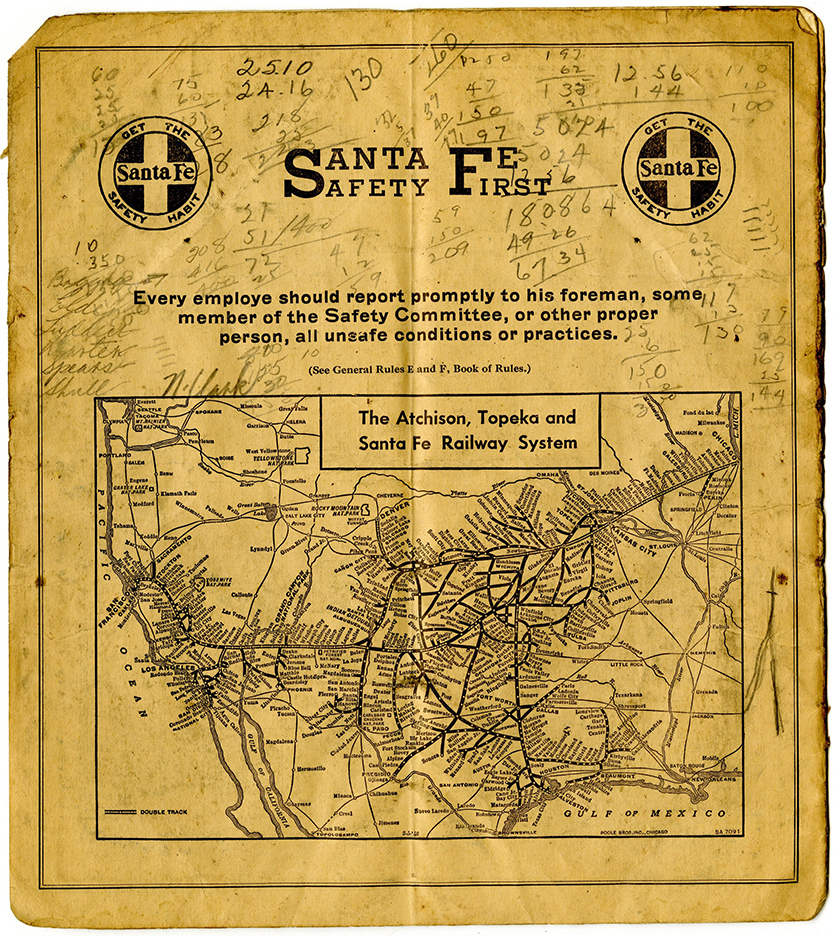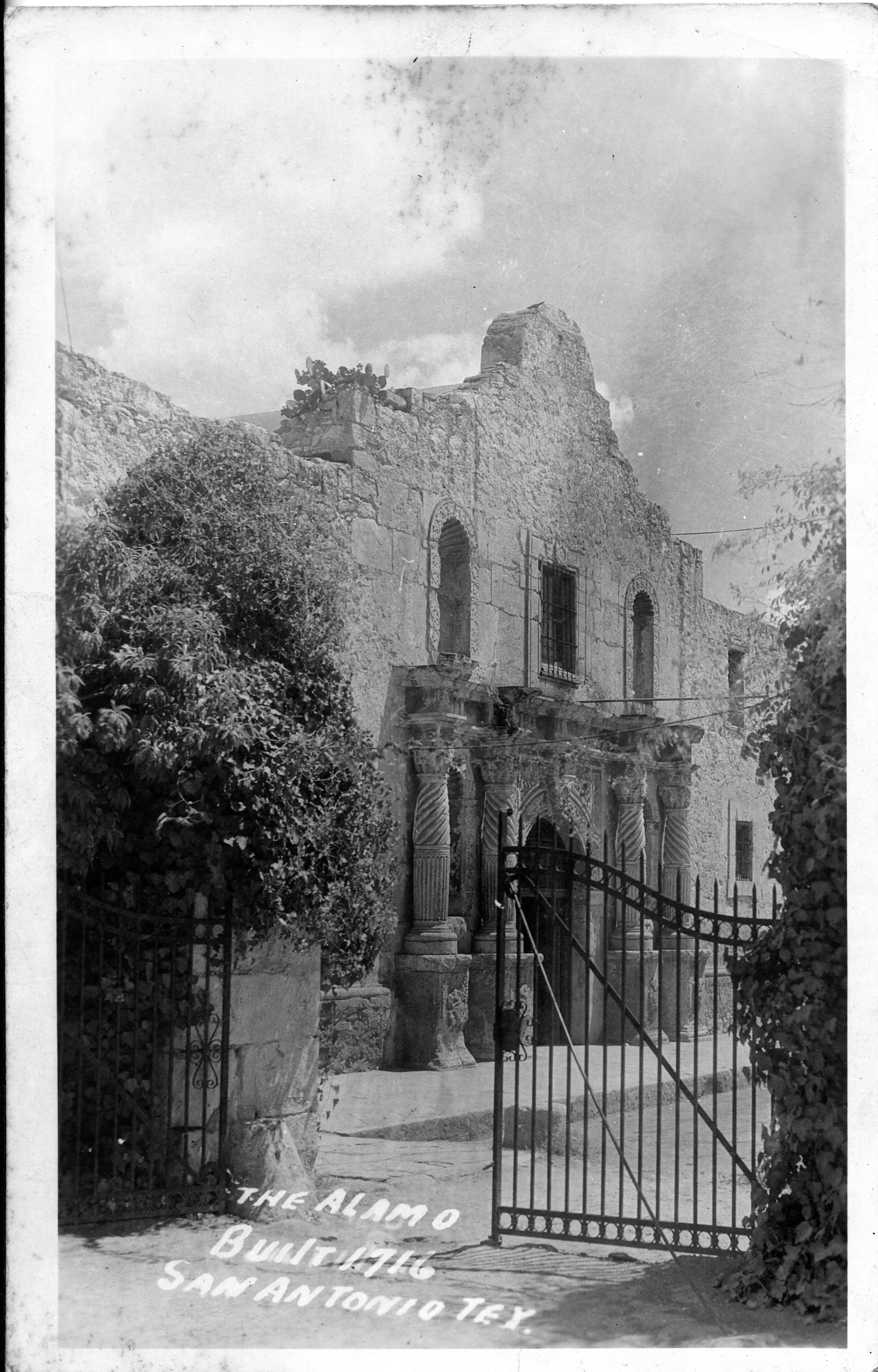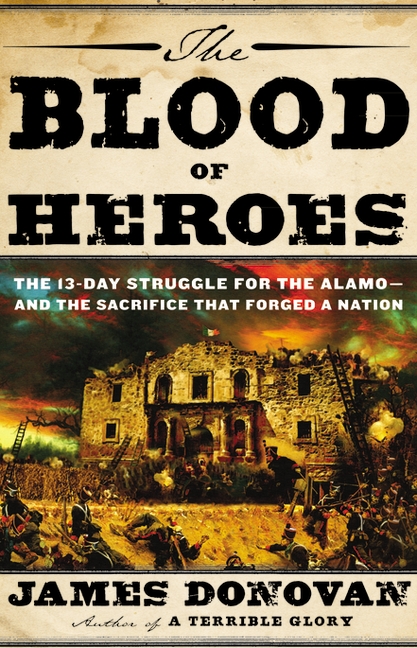Each month, we post an update to notify our readers about the latest archival collections to be processed and some highlights of our print material acquisitions. These resources are primed for research and are just a sampling of the many resources to be found at The Texas Collection!Continue Reading
Alamo
Research Ready: August 2017
Each month, we post an update to notify our readers about the latest archival collections to be processed and some highlights of our print material acquisitions. These resources are primed for research and are just a sampling of the many resources to be found at The Texas Collection!
August’s finding aids
By Paul Fisher, Processing Archivist
-
- Texas Railroad collection, 1903-1966, undated (#2692): Railroad timetables and manuals from railroads that operated in or around Texas.

- Jay Presson Allen screenplay collection, 1968-1972 (#4002): Collection contains two screenplays written by Jay Allen Presson entitled The Prime of Miss Jean Brodie (1968) and Travels with My Aunt (1972).
- James Edward Grant Screenplay collection, 1961 (#3997): Includes the final screenplay James Edward Grant composed for the film The Comancheros. The screenplay, finalized in May 1961, was based on the novel by Paul I. Wellman.
- David Newman and Robert Benton Screenplay collection, 1967 (#3999): Contains a screenplay written by David Newman and Robert Benton in 1967. Titled Bonnie and Clyde, this story is centered around the infamous couple and their criminal careers.
August’s print materials
By Amie Oliver, Librarian and Curator of Print Materials
![Fourteenth Annual Panhandle-Plains Dairy Show: Premium List. [Plainview, TX]: [publisher not identified], 1941. Print.](https://farm5.staticflickr.com/4354/36065783204_711d47982e_o.jpg)
Fourteenth Annual Panhandle-Plains Dairy Show: Premium List
Click here to view in BearCat.
Texas over Time: The Alamo, San Antonio
Texas has changed quite a bit over the years, as is readily seen in our vast photograph collection. To help bring some of those changes to life, we’ve created a “Texas over Time” series of GIFs that will illustrate the construction and renovations of buildings, changing aerial views, and more. Our collections are especially strong on Waco and Baylor images, but look for some views beyond the Heart of Texas, too.
- The original mission was built in 1718 as a Spanish mission by Father Antonio de San Buenaventura y Olivares but was then leveled in 1724 by a hurricane. The mission was moved to the present site and rebuilt in 1744 but collapsed due to structural flaws in 1762. It was rebuilt using the same material but never completed.
- The building was supposed to have been three stories tall, with bell towers on each side, with a dome as a roof. The four arches to support the dome were completed, but later demolished to fortify for the battle. Protective walls were put around it in 1758 to ward off Native American violence. Secularized in 1793, it became known as simply Pueblo Valero.
- In 1803, a Spanish cavalry unit (the Second Company of San Carlos de Alamo de Parras) occupied the pueblo, from which the present-day name of “the Alamo” is derived.
- In 1836, the famous battle occurred, pitting Santa Anna’s 1,500 troops against the between 188-250 Texians in the Alamo. After Santa Anna ended up losing the war two months later, he ordered General Andrade to demolish the fort. He burned down the cannon ramp, long barracks, and most of the Galera.
- In the years between the fire and the US Army coming, locals would use bricks from the Alamo as building materials, when needed. The humped parapet that is so iconic today was added when the Army remodeled the Alamo for use as a local headquarters.
- When the Army abandoned the Alamo in 1878, it was given back to the Catholic Church. A businessman named Hugo Grenet almost immediately bought the restored long barrack building for $20,000, which he then converted into a store. The church building was given over to the State of Texas in 1883, who then transferred ownership to the City of San Antonio. The long barracks was sold to the Daughters of the Republic of Texas in 1905. The store that Hugo Grenet had built on top of the site of the old long barracks was demolished in 1911, and the original wall was restored. The Alamo is presently a museum administered by the Daughters of the Republic of Texas and the Texas General Land Office.
Thompson, Frank T. The Alamo: A Cultural History. Dallas, Tex.: Taylor Trade Pub., 2001. Print
Check out our Flickr set to see these and other images of the Alamo, which primarily came from our General-San Antonio-Alamo photo files. GIF and factoids by student archives assistant Braxton Ray.
Research Ready: March 2013

Each month, we post a processing update to notify our readers about the latest collections that have finding aids online and are primed for research. Here’s the scoop for March:
- Kenneth Hazen Aynesworth papers, 1826-1965, undated: Aynesworth’s papers consist of family materials, correspondence, literary productions, collected materials, and medical records collected by Kenneth Hazen Aynesworth, a local doctor who gave the first donation to establish The Texas Collection in 1923.
- [Waco] Branch Davidians: “The Facts About Mt. Carmel” Exhibit collection, 1961-2004, undated: This records group contains materials collected by various groups and individuals (including Calvin Smith of the Strecker Museum) to organize an exhibit about the history of the Waco Branch Davidians. The exhibit, entitled “The Facts About Mt. Carmel,” was featured at the Helen Marie Taylor Museum in Waco, Texas, in February 1994.
- Adina E. De Zavala papers, 1830 (copy) -1940, undated: These papers document De Zavala’s historic preservation efforts in Texas to protect significant architecture in the state.

- Thomas L. and Pit Dodson collection, 1710-1991, undated: The Thomas L. and Pit Dodson collection contains a wide variety of collected materials, including literary productions, books, photographic materials, and scrapbooks. While spanning three centuries, this collection consists primarily of early- to mid-twentieth-century art prints and periodical clippings.
- Marvin C. Griffin papers, 1940-2010, undated: The Griffin papers contain literary productions, photographic materials, audio recordings, and other materials pertaining to Reverend Marvin Griffin, an African American pastor who fought for the spiritual and political freedoms of his congregations at New Hope Baptist Church (Waco) and Ebenezer Baptist Church (Austin).
- Roxie Henderson collection, 1852-1919: This collection contains personal items and collected materials of Roxie Henderson, a Baylor graduate who served during World War I as an American Red Cross nurse. Learn more.
- Isabella M. Henry papers, 1931-1981, undated: Henry’s papers features manuscripts detailing her career in the Women’s Army Corps and the Women’s Army Auxiliary Corps during World War II. Learn more.
- Lula Pace collection, 1895-1969, undated: This collection contains student notebooks, topographical maps, and scholarly publications by Lula Pace, a PhD graduate of the University of Chicago who served as a science professor at Baylor University in the early 1900s. Learn more.
The Blood of Heroes: The 13-Day Struggle for the Alamo and the Sacrifice that Forged a Nation
Please join The Texas Collection for a
book talk by author James Donovan on his recent publication,
The Blood of Heroes: The 13-Day Struggle for the Alamo—
and the Sacrifice that Forged a Nation
Thursday, October 25, 2012
4 pm
Bennett Auditorium
Baylor University
Book signing and reception to follow at
The Texas Collection
www.baylor.edu/lib/texas/bloodofheroes

“…Donovan has pulled together one of the best accounts ever of the Alamo siege, the attack, the massacre of James Fannin’s men at Goliad and Sam Houston’s ultimate victory over the Mexican army on April 21, 1836 at San Jacinto.”
—David Hendricks, mysanantonio.com
![The Story of the S·M·S Ranch. [Stamford, TX?]: [Swenson Bros.?], [1919]. Print.](https://farm5.staticflickr.com/4378/36503321190_45891d11e8_o.jpg)
![San Antonio, Tex. New York: Rotograph Co., [1905]. Print.](https://farm5.staticflickr.com/4353/36065783214_53b724bea2_o.jpg)

